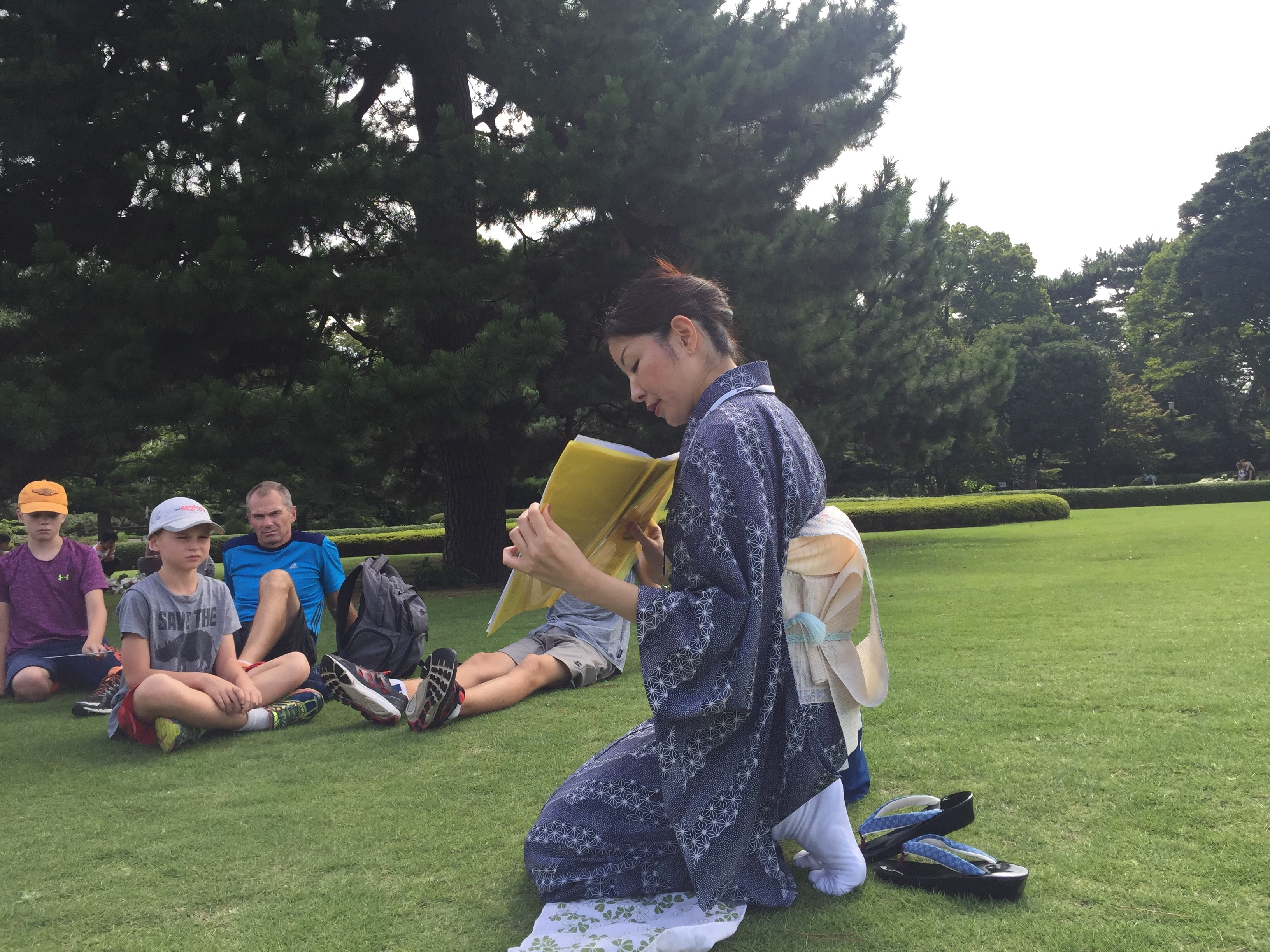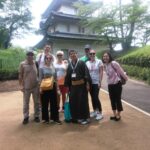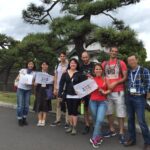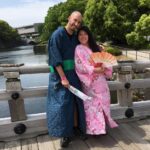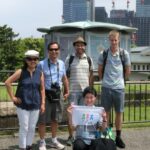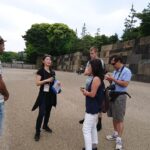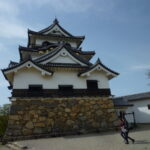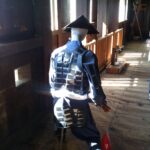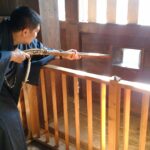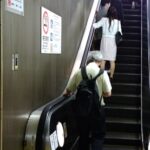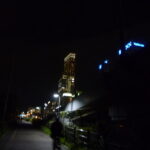Many thanks to guests who joined the tour on that day. We welcomed 21 guests from Spain, Australia, Belgium, Canada, Argentina, Turkey and Israel. We divided into 4 groups. The weather was very fine although we were worried because it was heavily raining and very windy early in the morning. But the rain and wind stopped as though the weather sided with us.
- 201805031003
- 201805031139
It was an irregular national holiday morning tour. The day was Constitution Memorial Day, which marked 71th year since current constitution was announced. The current constitution is second constitution in modern time. Before that, was feudal period governed by Samurai lords and officials.
When we explain to guests history of the East Garden which was a Shogun’s castle, we say the Shogun TOKUGAWA Ieyasu became master of all Samurai lords in Japan and established the castle since early 17th century. Then many question what was like before Tokugawa Shogunate in Japan. Before that, Japan was in warring state period and was disunited so provinces fought against each other to conquer others so one would get to the top of the nation. They were fighting to unify the whole nation, which is called “Tenka Toitsu (Unification of Universe)” in historical term. In those days for the people in Japan, Japan was the only universe.
During that period there were 3 major Samurai lords known in the textbook. ODA Nobunaga, TOYOTOMI Hideyoshi and TOKUGAWA Ieyasu. In late 16th century ODA nearly succeeded the unification but was assassinated by one of his disloyal retainers in Kyoto. Then TOYOTOMI who was closest Samurai lord to ODA, succeeded the governance of Japan. He established his own headquarter and a castle in Osaka.
TOKUGAWA reported to him and was ordered to govern eastern province of Japan, which was 200 kilometers away from his original domain and was a very small town called “Edo” at that time. It was TOYOTOMI’s strategy to weaken his potential rival’s power. After TOYOTOMI Hideyoshi’s death, Japan was divided into two. One is TOYOTOMI family side in the West and the other is TOKUGAWA Ieyasu in the East. Then in 1600, TOKUGAWA won a battle against TOYOTOMI family side and then he became the ultimate unifier, appointed as Shogun by Emperor who resided in Kyoto at that time. Later he burnt down the Osaka castle and killed all of TOYOTOMI family members.
The story between Osaka and Edo (currently Tokyo) is like Scotland and England in Britain. That part of history was novelized and then dramatized by American TV mini-series “Shogun.” A story of a British sailor cast away to Japan and then served TOKUGAWA to help him win the battles and unify the nation. In some battles to the unification, it is said TOKUGAWA Ieyasu wore metal armors imported from Great Britain.
In Osaka city, there is Osaka castle but that was rebuilt in modern time as imitation of the feudal era. So exterior should look like the old days but interior is concrete with elevators.
If that disappoints you and makes you want to see wooden made castle in existence from the old time, it is recommended to visit Himeji Castle in Hyogo prefecture as described in this report or Hikone castle in Shiga prefecture.
Hikone Castle is 3 storey but from the top floor, you can enjoy magnificent view of Lake Biwako, Japan’s biggest lake.
These are located in neighboring prefectures that share borders with Osaka prefecture. You can reach there within a few hours from Osaka.
After TOYOTOMIs died, TOKUGAWA rebuilt the castle and its foundation over the remain of the original castle and altered layout of the castle premise, so for Osakans, current castle is not TOYOTOMI’s but TOKUGAWA’s. The TOKUGAWA version of castle building was also burnt down by thunder in 1665. But like the East Garden some of guardhouses are still original, not recreation. There you can experience shooter in a guardhouse.
Because of such historical path, there is some kind of rivalry between Osaka and Tokyo. Osaka has its own dialect and accents like the Scottish in U.K. and has a different cultures and customs from Tokyo. In Osaka when people get on an escalator, they get on right side whereas Tokyoites got on left side.
Walking on the left side is Samurai custom so that two samurais walking face to face would not hit their sword sockets on a road. Osaka became more of merchant city since the defeat to TOKUGAWA. During Tokugawa Shogunate, Osaka was called “Tenka-no Daidokoro (Universal Kitchen)”, the very place for trading while Edo (currently Tokyo) was called “Shogun no Ohizamoto (Shogun’s controlled headquarter).”

In modern time, Osaka had Japan’s tallest observatory tower called Tsutenkaku whose height is over 100 meters until Tokyo tower was built in 1958, whose height is 333 meters, which you can view during the tour like the below picture.

Now Japan’s highest observatory tower is Sky Tree located in Asakusa, whose height is 634 meters, it is also the world’s tallest among observatory towers, 2nd to Dubai ‘s burj khalīfah building among human-made structures.

But today Osaka has Japan’s tallest building for practical use, named Abeno Harukas whose height is 300 meters, with 60 story floors which is higher than Landmark Tower building in Yokohama, neighboring satellite city to Tokyo, whose height is 296 meters with 70 story floors.

(Tsutenkaku and Abeno Harukas)

(Landmark Tower in Yokohama)
From top floor of Abenoharukas, you can view whole Osaka city including the Tsutenkaku tower and Osaka castle (only in day time).
Traveling to both cities and compare the difference is highly recommended. The difference is the very remain of warring state period of Japan.
(Written by Masa)

